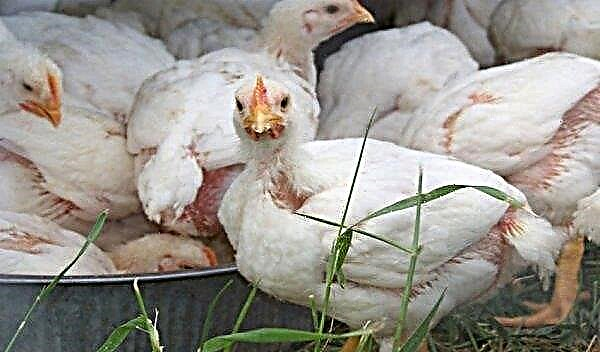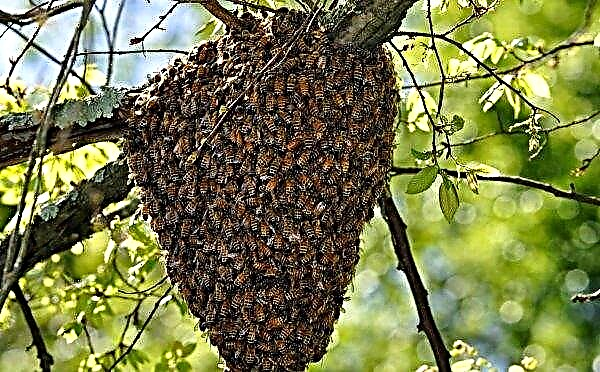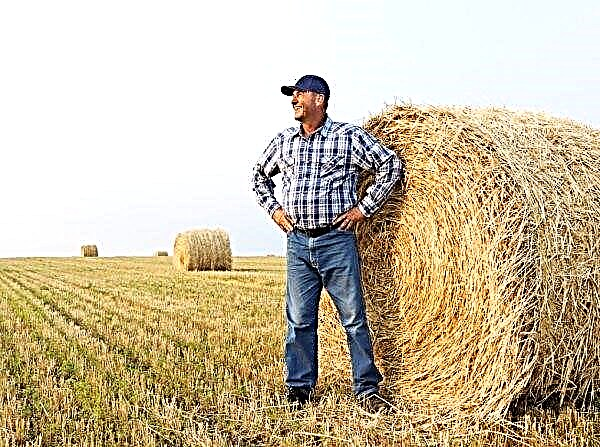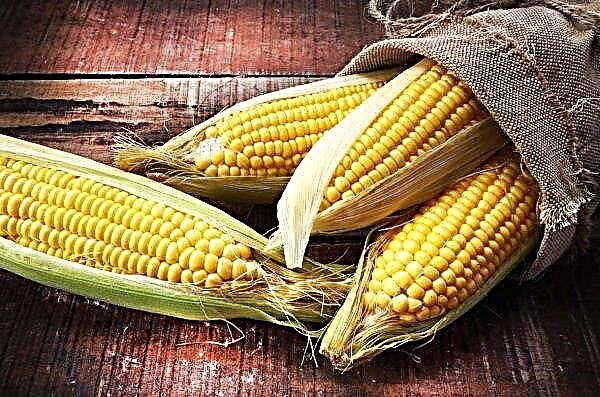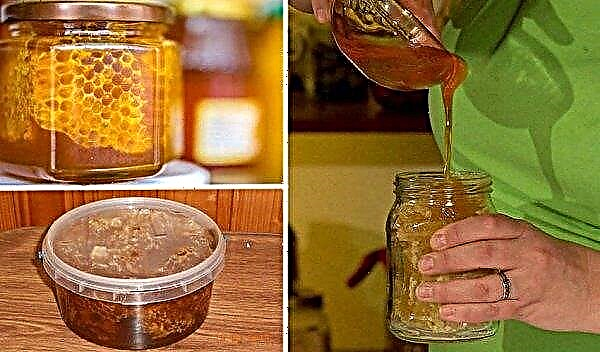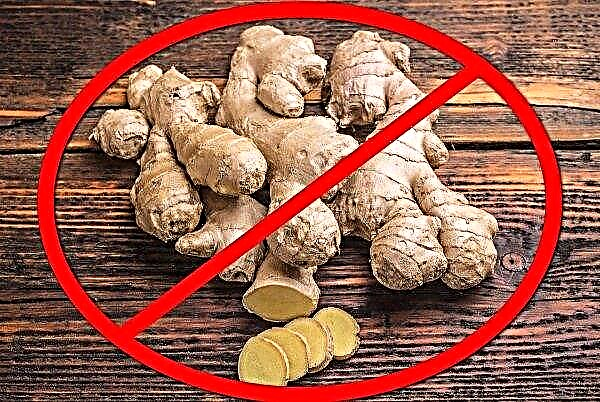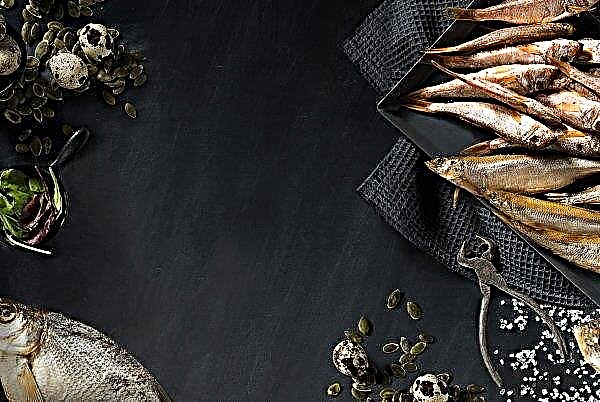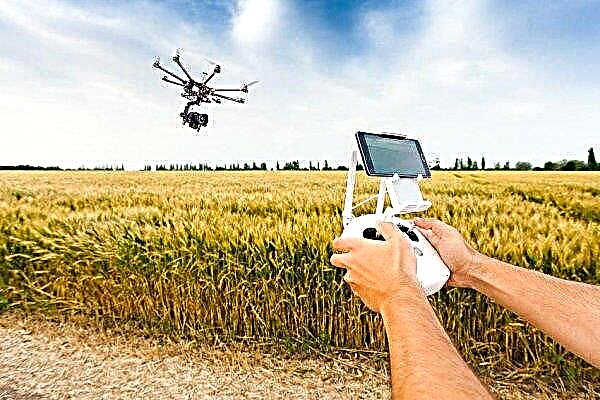Greenhouse tomatoes are especially in need of formation. Periodic pruning and pinching are some of the most important agricultural practices. Both operations are mandatory for plants, because each grower must be able to competently perform them. If you doubt your knowledge, the recommendations from this article will help to obtain the missing information.
Did you know? The world's largest tomato was grown in the US state of Wisconsin. The fruit weighed 2.9 kg.
Why you need to form tomatoes in a greenhouse
Most summer residents use polycarbonate greenhouses, and these are usually low structures. In pursuit of the harvest, farmers try to seedlings as much as possible in a small space, making thickened plantings. As a result, tomatoes interfere with each other and require the removal of leaves and stepsons.
In addition to the human factor, there are many other reasons for pinching and pruning excess tomato greens:
- Prevention of diseases, in particular late blight. Tomato bushes touching the lower leaves of the earth are more likely to get sick. A healthy bush in contact with a neighbor who has late blight, will pick up this ailment from him. If there are already plants affected by diseases in the greenhouse, they should be cut off last, so that the juice from them does not fall on healthy specimens.
- Improvement of illumination. Piles in the greenhouse affect yield. Pruning massive leaves accelerates the ripening and helps to tie tomatoes during flowering.
- The formation allows the crop to ripen earlier the bush gives a greater number of tied fruits, the fruiting phase lengthens, the photosynthesis process is activated, and the flow of air to the foliage improves.
Optimal timing
Experienced gardeners begin to form the foliage of a tomato plant almost immediately after planting. In general, the timing of pruning is individual, it all depends on the variety of tomato and on the climate of the area. Watch the plants in time to detect the growth of branches of the second level, which are to be removed.
Important! The pruning procedure is important to carry out with clean sharp scissors. If the tool came in contact with an infected tomato, it must be disinfected before proceeding to pinching and pinching healthy plants.
How to properly form tomatoes in a greenhouse
If in the closed ground you do not get a crop, then you should better familiarize yourself with how to form tomatoes.
Pinching the tops
When the required number of brushes with flowers grows on each shoot, then it's time to cut off the crown of the plant. This stage of formation allows you to stop the growth of the plant up and direct all useful substances directly to the already formed fruits. All the same, the new ovaries will not have time to ripen, so it is not advisable to spend strength on them. Cut each tomato shoot, leaving two leaves on top of the brushes.
Leaf pruning
Determinant instances are more squat and massive. They have a lot of stepsons, which do not need to be removed, or they are partially trimmed. To prevent shading of the bush, excess greens (foliage) should be removed. You need to get rid of leaves that have various defects or spots. Often, the plant itself tries to throw off unnecessary foliage from itself - they dry and fall off. If you observe such a phenomenon, your task is to accelerate this natural process. Urgent pruning is required by leaves touching the ground or neighboring plants.
Pruning
Indeterminate varieties form in one stem. This means that all shoots must be removed. If you follow the correct pattern of formation, the bush will grow quite high. You can leave a few trunks. For the first time, stepsons are removed after 10-14 days after planting seedlings. By this time, the tomatoes are acclimatizing and are starting to grow. Repeat this manipulation with an interval of 7-10 days throughout the entire vegetative period. The planting of tomato plants in the greenhouse is carried out when the daughter shoots are small. Their growth draws strength from the bush to set and grow vegetables, so stepsons 3–7 cm long must be cut off. If you later find an escape, then do not delay the procedure until you have time to bind to it and blush the fruits.
Repeat this manipulation with an interval of 7-10 days throughout the entire vegetative period. The planting of tomato plants in the greenhouse is carried out when the daughter shoots are small. Their growth draws strength from the bush to set and grow vegetables, so stepsons 3–7 cm long must be cut off. If you later find an escape, then do not delay the procedure until you have time to bind to it and blush the fruits.
To prevent a new stepson from growing out of the cut branch, remove the shoot at the very base, leaving only 1–2 cm. If plants are grown in one stalk, then all will have to be cut off without the remainder of the stepson. If you decide to leave the second shoot, then save that stepson, located under the main flowering branch and closer to it. The branch with which the second trunk is created will also start to launch additional processes. They must be deleted.
Important! When forming semi-determinant varieties, it is permissible to leave 1–2 lateral substitution shoots near the central stem. Tie the plant under the first brush. The next few brushes should form on the main stem.
Follow-up care
Care for tomato bushes that have been pruned consists of regular watering and mulching of the soil, airing the greenhouse and some other points:
- Watering in a greenhouse is desirable at room temperature. The frequency of irrigation is once every four days. Most often, only flowering bushes are watered. Pour water under the root. The most acceptable irrigation method in this case is drip irrigation.
- Maintain a sufficient level of moisture in the covered ground throughout the growing phase.
- Do not forget to air the greenhouse - tomatoes are not afraid of through winds.
- On a sunny day, the temperature in the room should not exceed + 26 ° C, and in the cool should not fall below + 20 ° C.
- Bushes should be lit by the sun throughout the daylight hours.

Useful tips for growing tomatoes in a greenhouse
Growing greenhouse tomatoes in compliance with the following recommendations guarantees a rich harvest:
- Only plant healthy seedlings purchased from reliable suppliers.
- Tomatoes should not be adjacent to potatoes and daffodils.
- If you surround the tomato bushes with garlic and basil, harmful insects will no longer disturb plantings. Garlic will also prevent the infection of bushes with fungi, as well as improve the taste of the fruit. The garlic infusion will have the same effect if it is applied under the root every day.
- Terminally ill bushes must be removed immediately with the root and destroyed so that the infection is not transmitted to healthy plants.
- In order to reduce the spread of ailments from the diseased to a healthy bush, provide a sufficient distance between plants - at least 50-60 cm.
- If the greenhouse fruits do not have time to ripen on the vine, after harvest, distribute the crop in paper bags, then transfer to a dark, cool room. Under such conditions, the fruits ripen perfectly.
- If calcium is lacking in the ground, the eggshell will correct the situation. An additional benefit of this tool is the prevention of fungal diseases.
As you can see, it is very important to competently take care of tomato bushes in the greenhouse, forming them in accordance with all the rules, terms and procedures. We hope that our tips will help you, and this procedure will become understandable and easy for you.Did you know? The first description of tomatoes by Europeans dates back to 1555. It was made in Italy, where the culture was given the name "Podoro", which means "golden apple."

